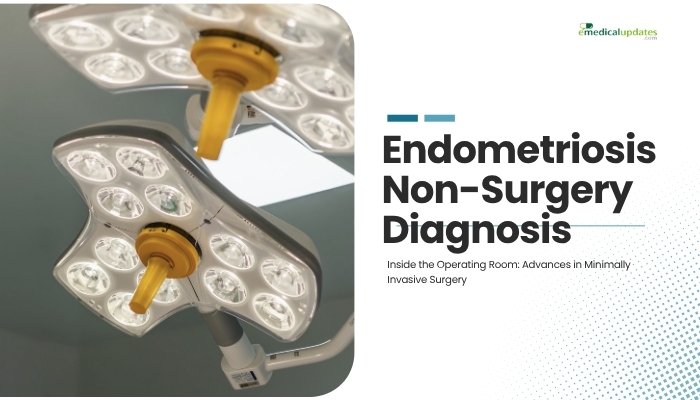Introduction
Endometriosis affects up to 10% of women of reproductive age, yet it can take years to diagnose. The condition, in which tissue resembling the uterine lining grows outside the uterus, often causes debilitating pain, heavy periods, and fertility issues.
Currently, definitive diagnosis typically requires laparoscopic surgery—both invasive and costly. However, a new blood test is under development, aiming to detect endometriosis biomarkers non-invasively.
If proven effective, it could dramatically accelerate diagnosis and guide timely treatment. This article explains how the potential test works, what advantages it might bring, and where research stands.
Why Endometriosis Diagnosis Is Challenging
Reliance on Laparoscopy
- Gold Standard: Surgeons visually identify and possibly remove endometrial lesions in the pelvic cavity.
- Risks: Any surgical procedure includes anesthesia complications, infection potential, and recovery time.
- Delays in Detection: Women often wait years before undergoing surgery to confirm their suspicions of endometriosis.
Impact on Quality of Life
Undiagnosed and untreated endometriosis can lead to chronic pain, sexual dysfunction, and missed work or school days. Earlier detection could ease distress and limit disease progression, improving fertility and overall well-being.
The Proposed Blood Test
Detecting Specific Biomarkers
Researchers are pursuing protein or genetic markers that appear in circulation when endometrial-like tissue grows ectopically. Various classes of biomarkers under investigation include:
- Inflammatory Cytokines: Some women with endometriosis show elevated immune activation.
- Hormone Receptors: Changes in estrogen-related pathways.
- MicroRNAs: Non-coding RNAs that differ in individuals with vs. without endometriosis.
Method of Development
Scientists typically analyze blood samples from confirmed endometriosis patients and healthy controls, searching for consistent differences. Machine learning or biomarker panels might hone a test that can flag endometriosis reliably.
Benefits of a Non-Surgical Test
- Reduced Diagnosis Time: Without waiting for laparoscopic scheduling or recovery, many patients could receive an answer sooner.
- Lower Healthcare Costs: Less invasive approach means fewer operating room expenses, anesthesia, and postoperative care.
- Immediate Treatment Pathway: If confirmed via blood test, physicians can start medication (like hormonal therapy) or other management, avoiding further disease progression.
Ongoing Research and Validation
Early Clinical Trials
Some small-scale studies suggest potential biomarker panels with 80–90% accuracy, though further work is needed to replicate findings in larger, more diverse populations. Sensitivity and specificity must both be high to prevent misdiagnosis.
Potential Combination Tools
While a single blood test is appealing, some experts see synergy with ultrasound or MRI findings to confirm suspicion. Over time, algorithms that blend biomarker data with imaging might yield near-definitive diagnosis sans surgery.
Regulating and Approving
Given endometriosis’s complexity, test developers must demonstrate robust, reproducible results. Regulatory bodies like the FDA will demand large-scale trials proving the test’s ability to accurately identify endometriosis across various stages and subtypes.
Limitations and Next Steps
- Validation in Real-World Practice: Data from controlled research settings might differ from routine clinical settings.
- Costs and Coverage: Insurance acceptance could hinge on the test’s proven accuracy.
- Biological Variability: Endometriosis presents heterogeneously, and not all patients have the same biomarkers or symptom patterns.
Despite these challenges, scientific consensus is building that a reliable blood test is within reach. Additional multi-center trials and worldwide collaborations could refine the test and confirm its clinical utility.
Frequently Asked Questions
- Is a non-invasive endometriosis test available now?
- While some experimental biomarker tests exist, none are widely commercially offered. Ongoing studies aim for official validation and regulatory approval.
- Would this replace laparoscopy entirely?
- Potentially, yes, for diagnosis. However, laparoscopic surgery might still be needed for lesion removal or advanced endometriosis management.
- Could the blood test detect mild cases or all disease stages?
- Ideally, yes, but confirming sensitivity across varied disease severity remains a key goal for large-scale trials.
- How accurate is it?
- Preliminary data suggests promising accuracy, but final specificity/sensitivity metrics will emerge post larger, confirmatory studies.
- What if the test is negative but symptoms persist?
- Clinical judgment still matters. Doctors might proceed with imaging or laparoscopic evaluation if suspicion remains high.
Conclusion
A non-surgical endometriosis blood test may soon become a reality, offering a faster, less invasive path to diagnosis. By detecting disease-specific biomarkers, it holds the potential to reduce diagnostic delays that have plagued patients for years. Though still under development, this approach could streamline how clinicians manage suspected endometriosis, sparing many from the rigors of diagnostic laparoscopy. Continued research, larger clinical trials, and robust validation will determine just how much this test can revolutionize endometriosis care. In the meantime, those enduring chronic pelvic pain or other hallmark signs can watch developments closely, hopeful that easier diagnosis and intervention are on the horizon.
References
-
Rogers AD, Adamson GD. (2021). “Biomarker-based tests for endometriosis detection.” Fertil Steril.
-
CDC (2022). “Endometriosis: key facts and trends.”
-
Burney RO, Giudice LC. (2019). “Pathogenesis and pathophysiology of endometriosis.” Fertil Steril.
-
Taylor HS, et al. (2020). “Emerging blood tests for endometriosis: systematic review.” Am J Obstet Gynecol.




